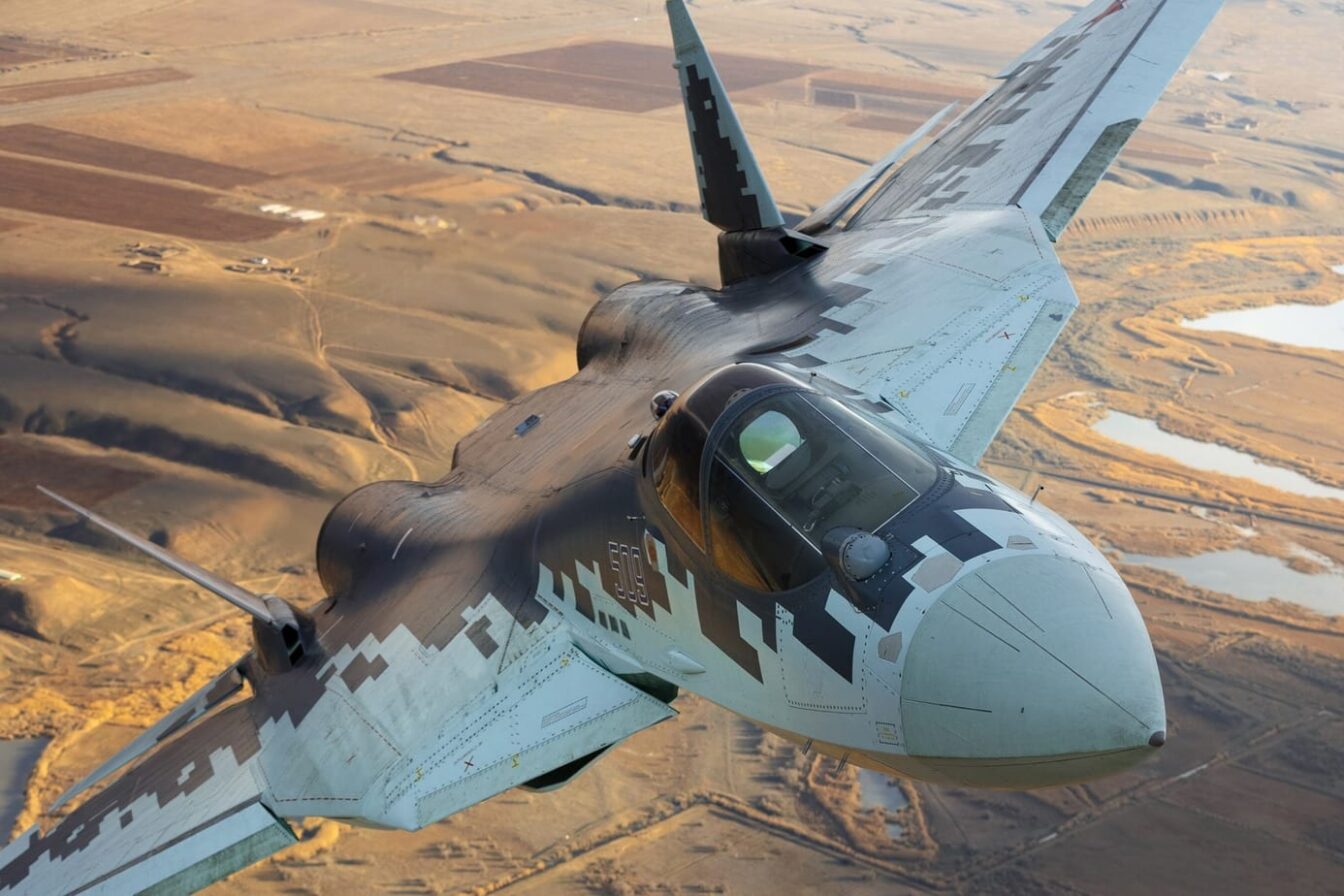Russia’s Su-57 Felon is the country’s first true foray into the development of fifth-generation fighters. While comparatively little is known about the aircraft compared to other multiroles of the same generation, it is nonetheless one of Russia’s most modern aerial tools.
Given how early the Su-57 is in its development, most of what we know about the fighter is based on conjecture. Russia’s official figures could be exaggerating the aircraft’s capabilities in order to lure future customers and inflate the perception of Russian strength.
Meeting the Definition
While the definition of a fifth-generation fighter varies, some of the most agreed-upon characteristics include stealth capabilities, advanced avionics, high-performance engines with supercruise ability, and sophisticated computing and networking capabilities. Russian industry and military officials claim the Su-57 has most or all of the hallmarks of a fifth-generation fighter, but this is probably not entirely true.
The Su-57 is likely outshined by fifth-generation peers such as the F-22, the F-35, or the Chinese J-20 in terms of stealth technology. This shortcoming is likely a result of challenges in bonding the aircraft’s body panels to fit its stealth profile. Russian engineers working on the single-seat, twin-engine Su-57 also appear to have had trouble incorporating the state-of-the-art second-generation Izdeliye 30 engines, which featured in early prototype models, and have instead opted to incorporate the Saturn AL-41F1 in serial production of the Su-57. This is the same engine used in Russia’s fourth-generation Su-35 fighters.
Russia claims that the Su-57’s avionics and computing power make it capable of fulfilling the battlefield command and coordination role demanded of fifth-generation multirole aircraft. But the F-35 is probably the only fifth-generation aircraft to boast the full 360-degree coverage that Russia claims the Su-57 gives its pilots. The Su-57 also purports to carry several beyond-visual-range, medium-range, and short-range missiles – including the hypersonic R-37 air-to-air missile – as well as ground missiles and precision-guided bombs.
The Su-57’s Arrested Development
Developed by the design group Sukhoi, the Su-57 has been hamstrung by organizational difficulties. Similar hardships have plagued many other aerospace projects since the 2006 agglomeration of Russia’s aircraft companies into the United Aircraft Corporation.
The aircraft has been in development since 2002, but numerous delays and cost overruns have slowed the process significantly. While the Felon’s development was initially a joint project between Russia and India, India pulled out of the program in 2018, citing disputes in cost and technology sharing, as well as the design of the aircraft itself.
A 2019 crash of a Su-57 in flight tests sent shockwaves through the program. The crash resulted from an issue with the aircraft’s tail control surfaces, and it led to the resignation of Igor Ozar, Sukhoi’s CEO. Sanctions placed on Russia after its 2014 annexation of Crimea also appear to have slowed the development of critical technologies incorporated in the Su-57.
To date, only а handful of Su-57s have been serially produced, in addition to the roughly 10 prototype models of the aircraft. Despite these low numbers, Russian leaders have claimed that the Russian Aerospace Forces would receive 22 Su-57s by 2024, and 76 by 2028 – an extremely optimistic assessment at current rates.
In addition to appearances at Russia’s Victory Day parades, two Su-57s were reportedly deployed to Syria as part of Russia’s air campaign in that country, although they probably saw no combat. While rumors held that Su-57s participated in Russia’s invasion of Ukraine, there is no definitive evidence of this. Russia’s defense export agency has also sought to sell the Su-57 to potential clients such as China, Turkey, and Algeria, but no deals have come to fruition.
The Su-57 is Russia’s attempt to build a fifth-generation fighter that keeps pace with those built by the United States and China. But Russia has struggled to develop and produce the aircraft. It is unclear that Russia will ever overcome the obstacles it faces to make the Su-57 a mainstay of its aerospace forces.
Wesley Culp is a Research Fellow at the Center for the Study of the Presidency and Congress. He regularly writes on Russian and Eurasian leadership and national security topics and has been published in The Hill and the Diplomatic Courier. He can be found on Twitter @WesleyJCulp.

